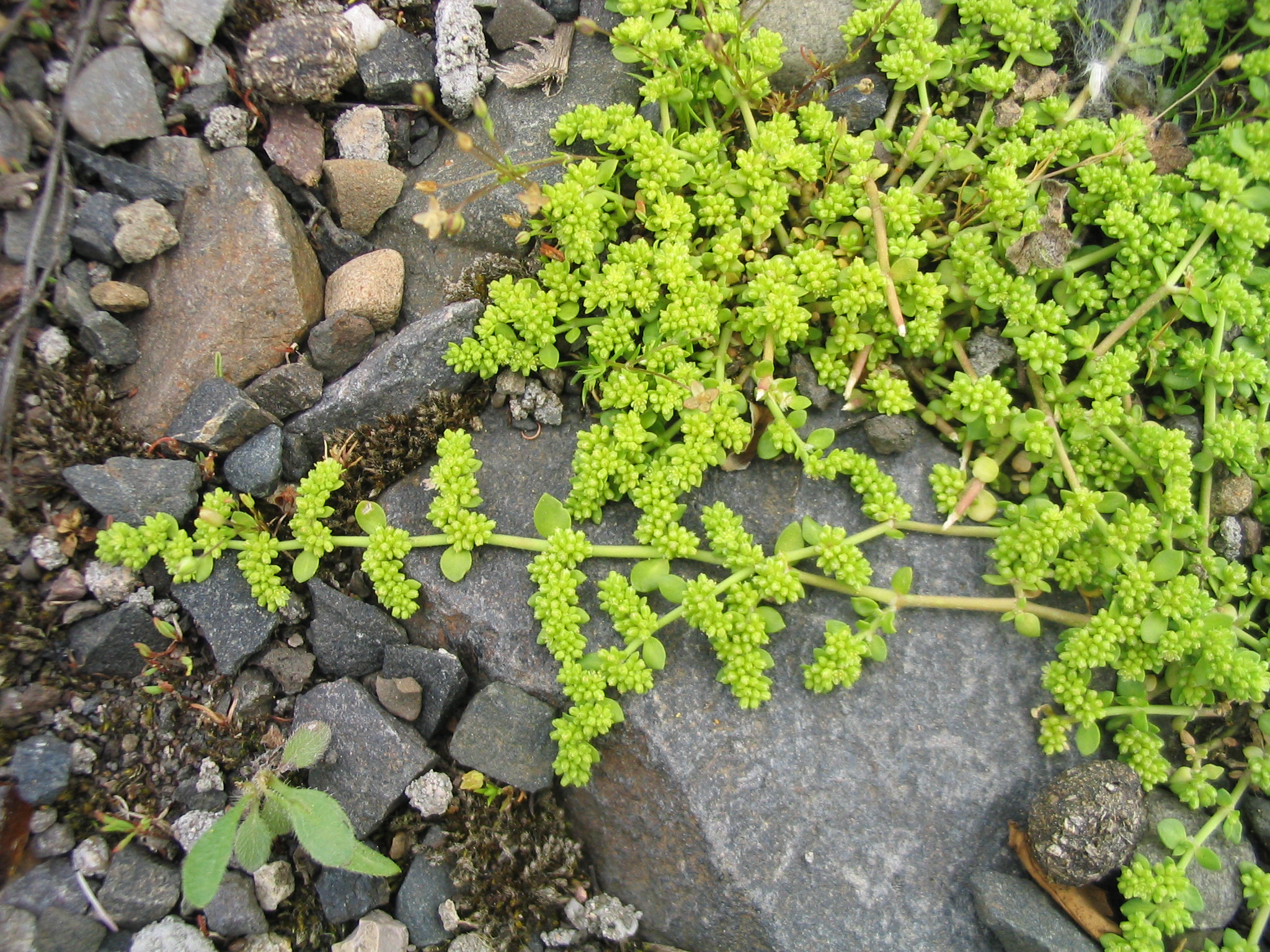|
Acacia Ancistrophylla
''Acacia ancistrophylla'' is a shrub of the genus ''Acacia'' and the subgenus ''Plurinerves'' that is native to several areas on southern Australia. Description The prickly shrub typically grows to a height of and has a dense or obconic habit. It has glabrous or sparsely haired branchlets. Like most species of ''Acacia'' it has phyllodes rather than true leaves. The glabrous leathery and evergreen phyllodes are patent to erect with a narrowly oblong oblanceolate, linear or linear-oblanceolate shape and are straight to slightly curved. Th phyllodes have a length of and a width of and have many closely parallel nerves obscure to distinct. It blooms from August to October and produces yellow flowers. Taxonomy The species was first described in 1904 by the botanist Cecil Andrews. There are three recognised varieties: * ''Acacia ancistrophylla'' var. ''ancistrophylla'' * ''Acacia ancistrophylla'' var. ''lissophylla'' * ''Acacia ancistrophylla'' var. ''perarcuata'' Distribution ... [...More Info...] [...Related Items...] OR: [Wikipedia] [Google] [Baidu] |
Acacia
''Acacia'', commonly known as the wattles or acacias, is a large genus of shrubs and trees in the subfamily Mimosoideae of the pea family Fabaceae. Initially, it comprised a group of plant species native to Africa and Australasia. The genus name is New Latin, borrowed from the Greek (), a term used by Dioscorides for a preparation extracted from the leaves and fruit pods of '' Vachellia nilotica'', the original type of the genus. In his ''Pinax'' (1623), Gaspard Bauhin mentioned the Greek from Dioscorides as the origin of the Latin name. In the early 2000s it had become evident that the genus as it stood was not monophyletic and that several divergent lineages needed to be placed in separate genera. It turned out that one lineage comprising over 900 species mainly native to Australia, New Guinea, and Indonesia was not closely related to the much smaller group of African lineage that contained ''A. nilotica''—the type species. This meant that the Australasian lineag ... [...More Info...] [...Related Items...] OR: [Wikipedia] [Google] [Baidu] |
Australia
Australia, officially the Commonwealth of Australia, is a sovereign ''Sovereign'' is a title which can be applied to the highest leader in various categories. The word is borrowed from Old French , which is ultimately derived from the Latin , meaning 'above'. The roles of a sovereign vary from monarch, ruler or ... country comprising the mainland of the Australian continent, the island of Tasmania, and numerous smaller islands. With an area of , Australia is the largest country by area in Oceania and the world's sixth-largest country. Australia is the oldest, flattest, and driest inhabited continent, with the least fertile soils. It is a megadiverse country, and its size gives it a wide variety of landscapes and climates, with deserts in the centre, tropical Forests of Australia, rainforests in the north-east, and List of mountains in Australia, mountain ranges in the south-east. The ancestors of Aboriginal Australians began arriving from south east Asia approx ... [...More Info...] [...Related Items...] OR: [Wikipedia] [Google] [Baidu] |
Glabrousness (botany)
Glabrousness (from the Latin '' glaber'' meaning "bald", "hairless", "shaved", "smooth") is the technical term for a lack of hair, down, setae, trichomes or other such covering. A glabrous surface may be a natural characteristic of all or part of a plant or animal, or be due to loss because of a physical condition, such as alopecia universalis in humans, which causes hair to fall out or not regrow. In botany Glabrousness or otherwise, of leaves, stems, and fruit is a feature commonly mentioned in plant keys; in botany and mycology, a ''glabrous'' morphological feature is one that is smooth and may be glossy. It has no bristles or hair-like structures such as trichomes. In anything like the zoological sense, no plants or fungi have hair or wool, although some structures may resemble such materials. The term "glabrous" strictly applies only to features that lack trichomes at all times. When an organ bears trichomes at first, but loses them with age, the term used is ''glabres ... [...More Info...] [...Related Items...] OR: [Wikipedia] [Google] [Baidu] |
Phyllode
Phyllodes are modified petioles or leaf stems, which are leaf-like in appearance and function. In some plants, these become flattened and widened, while the leaf itself becomes reduced or vanishes altogether. Thus the phyllode comes to serve the purpose of the leaf. Some important examples are '' Euphorbia royleana'' which are cylindrical and ''Opuntia'' which are flattened. They are common in the genus ''Acacia'', especially the Australian species, at one time put in ''Acacia'' subg. ''Phyllodineae''. Sometimes, especially on younger plants, partially formed phyllodes bearing reduced leaves can be seen. The illustration (to the right) of '' Acacia suaveolens'' from ''Novae Hollandiae plantarum specimen'' shows the juvenile true leaves, together with the developing phyllodes, and the phyllodes of the mature plant. The genus, ''Daviesia'', in the family Fabaceae, is characterised in part by the plants having phyllodes. File:Acacia suaveolens 9064505997 9f14f5f117 o.jpg, '' Aca ... [...More Info...] [...Related Items...] OR: [Wikipedia] [Google] [Baidu] |
Western Australia
Western Australia (commonly abbreviated as WA) is a state of Australia occupying the western percent of the land area of Australia excluding external territories. It is bounded by the Indian Ocean to the north and west, the Southern Ocean to the south, the Northern Territory to the north-east, and South Australia to the south-east. Western Australia is Australia's largest state, with a total land area of . It is the second-largest country subdivision in the world, surpassed only by Russia's Sakha Republic. the state has 2.76 million inhabitants percent of the national total. The vast majority (92 percent) live in the south-west corner; 79 percent of the population lives in the Perth area, leaving the remainder of the state sparsely populated. The first Europeans to visit Western Australia belonged to the Dutch Dirk Hartog expedition, who visited the Western Australian coast in 1616. The first permanent European colony of Western Australia occurred following ... [...More Info...] [...Related Items...] OR: [Wikipedia] [Google] [Baidu] |
South Australia
South Australia (commonly abbreviated as SA) is a state in the southern central part of Australia. It covers some of the most arid parts of the country. With a total land area of , it is the fourth-largest of Australia's states and territories by area, and second smallest state by population. It has a total of 1.8 million people. Its population is the second most highly centralised in Australia, after Western Australia, with more than 77 percent of South Australians living in the capital Adelaide, or its environs. Other population centres in the state are relatively small; Mount Gambier, the second-largest centre, has a population of 33,233. South Australia shares borders with all of the other mainland states, as well as the Northern Territory; it is bordered to the west by Western Australia, to the north by the Northern Territory, to the north-east by Queensland, to the east by New South Wales, to the south-east by Victoria, and to the south by the Great Australian B ... [...More Info...] [...Related Items...] OR: [Wikipedia] [Google] [Baidu] |
Victoria (Australia)
Victoria is a state in southeastern Australia. It is the second-smallest state with a land area of , the second most populated state (after New South Wales) with a population of over 6.5 million, and the most densely populated state in Australia (28 per km2). Victoria is bordered by New South Wales to the north and South Australia to the west, and is bounded by the Bass Strait to the south (with the exception of a small land border with Tasmania located along Boundary Islet), the Great Australian Bight portion of the Southern Ocean to the southwest, and the Tasman Sea (a marginal sea of the South Pacific Ocean) to the southeast. The state encompasses a range of climates and geographical features from its temperate coastal and central regions to the Victorian Alps in the northeast and the semi-arid north-west. The majority of the Victorian population is concentrated in the central-south area surrounding Port Phillip Bay, and in particular within the metr ... [...More Info...] [...Related Items...] OR: [Wikipedia] [Google] [Baidu] |
Western Australian Herbarium
The Western Australian Herbarium is the State Herbarium in Perth, Western Australia. It is part of the State government's Department of Parks and Wildlife, and has responsibility for the description and documentation of the flora of Western Australia. It has the Index Herbariorum code of PERTH. The Hebarium forms part of the Australasian Virtual Herbarium. The Herbarium is linked to the Western Australian 'Regional Herbaria Network' – which links approximately 84 regional community groups which have local reference collections. In 2000, with the Wildflower Society of Western Australia and the Botanic Gardens and Parks Authority it published ''The Western Australian Flora – A Descriptive Catalogue''. History The Herbarium was formed as the amalgamation of three separate government department herbaria: those of the Western Australian Museum, the Department of Agriculture, and the "forest herbarium" maintained by the Conservator of Forests. The first of these was formed by ... [...More Info...] [...Related Items...] OR: [Wikipedia] [Google] [Baidu] |
Wheatbelt (Western Australia)
The Wheatbelt is one of nine regions of Western Australia defined as administrative areas for the state's regional development, and a vernacular term for the area converted to agriculture during colonisation. It partially surrounds the Perth metropolitan area, extending north from Perth to the Mid West region, and east to the Goldfields–Esperance region. It is bordered to the south by the South West and Great Southern regions, and to the west by the Indian Ocean, the Perth metropolitan area, and the Peel region. Altogether, it has an area of (including islands). The region has 42 local government authorities, with an estimated population of 75,000 residents. The Wheatbelt accounts for approximately three per cent of Western Australia's population. Ecosystems The area, once a diverse ecosystem, reduced when clearing began in the 1890s with the removal of plant species such as eucalypt woodlands and mallee, is now home to around 11% of Australia's critically en ... [...More Info...] [...Related Items...] OR: [Wikipedia] [Google] [Baidu] |
Limestone
Limestone ( calcium carbonate ) is a type of carbonate sedimentary rock which is the main source of the material lime. It is composed mostly of the minerals calcite and aragonite, which are different crystal forms of . Limestone forms when these minerals precipitate out of water containing dissolved calcium. This can take place through both biological and nonbiological processes, though biological processes, such as the accumulation of corals and shells in the sea, have likely been more important for the last 540 million years. Limestone often contains fossils which provide scientists with information on ancient environments and on the evolution of life. About 20% to 25% of sedimentary rock is carbonate rock, and most of this is limestone. The remaining carbonate rock is mostly dolomite, a closely related rock, which contains a high percentage of the mineral dolomite, . ''Magnesian limestone'' is an obsolete and poorly-defined term used variously for dolomite, for lime ... [...More Info...] [...Related Items...] OR: [Wikipedia] [Google] [Baidu] |
List Of Acacia Species
Several cladistic analyses have shown that the genus ''Acacia'' is not monophyletic. While the subg. ''Acacia'' and subg. ''Phyllodinae'' are monophyletic, subg. ''Aculeiferum'' is not. This subgenus consists of three clades. Therefore, the following list of ''Acacia'' species cannot be maintained as a single entity, and must either be split up, or broadened to include species previously not in the genus. This genus has been provisionally divided into 5 genera, ''Acacia'', ''Vachellia'', ''Senegalia'', ''Acaciella'' and ''Mariosousa''. The proposed type species of ''Acacia'' is ''Acacia penninervis''. Which of these segregate genera is to retain the name ''Acacia'' has been controversial. The genus was previously typified with the African species ''Acacia scorpioides'' (L.) W.F.Wright, a synonym of ''Acacia nilotica'' (L.) Delile. Under the original typification, the name ''Acacia'' would stay with the group of species currently recognized as the genus ''Vachellia''. Orchard ... [...More Info...] [...Related Items...] OR: [Wikipedia] [Google] [Baidu] |








